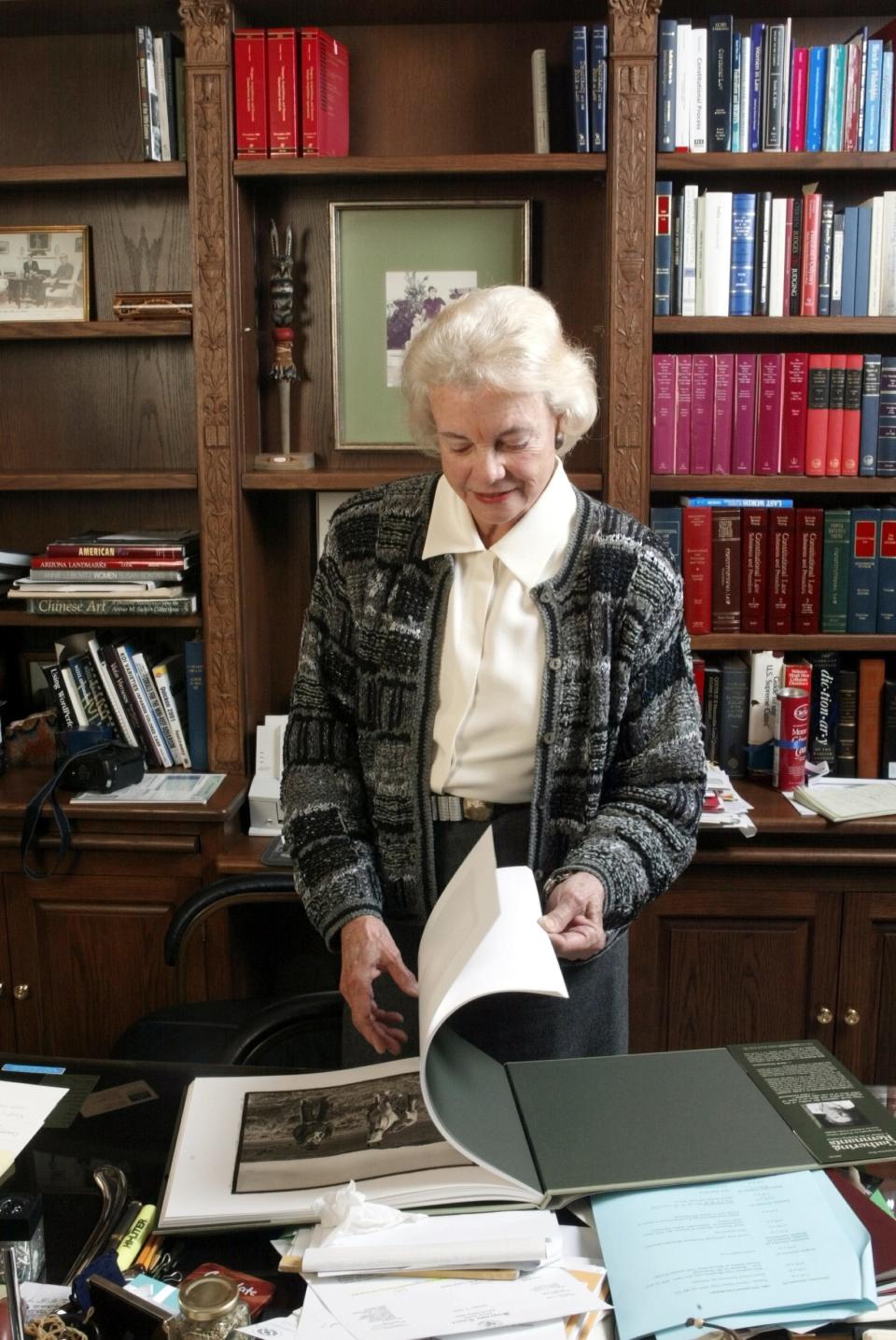'Audience of one.' A look at some of Sandra Day O'Connor's biggest Supreme Court decisions
WASHINGTON – Then-Chief Justice William Rehnquist sat in the center. But by the early 2000s, legal experts knew the Supreme Court belonged to Sandra Day O'Connor.
Nominated by President Ronald Reagan in 1981 – making her the first woman to sit on the nation's highest court – O'Connor had emerged as the consummate swing vote.
O'Connor, who retired from the court in 2006, died Friday of complications related to advanced dementia, the Supreme Court said. She was 93.
O'Connor: Sandra Day O'Connor, the first woman to serve on the Supreme Court, dies at 93
"Lawyers who argue and write briefs to the court know that often they are, for all practical purposes, arguing to an audience of one," legal scholar Erwin Chemerinsky, today the dean of Berkeley Law, wrote in 2001.
The former state lawmaker had a profound impact on abortion, racial equality, religion and federalism. Here's a look at some of her most noted decisions.
Planned Parenthood v. Casey
The landmark abortion case affirmed the central holding of Roe v. Wade, that the Constitution protected a right to an abortion. But the 1992 Casey decision, of which O’Connor was a key architect, changed how and when people could exercise that right. Rather than setting the cutoff at the end of the second trimester, the Casey decision said people could have an abortion until the point of viability, or when a fetus could survive outside the womb. A 5-4 majority in Casey ruled that, before viability, states could not impose an “undue burden” on a pregnant person’s access to abortion. The decision, along with Roe itself, was overruled in June.

Grutter v. Bollinger
In another case that has echoed into modern times, a 5-4 majority of the Supreme Court ruled in 2003 that the University of Michigan Law School did not violate the 14th Amendment by considering race in its admissions process. “In order to cultivate a set of leaders with legitimacy in the eyes of the citizenry, it is necessary that the path to leadership be visibly open to talented and qualified individuals of every race and ethnicity,” O’Connor wrote. But, she added, the court expected that "25 years from now, the use of racial preferences will no longer be necessary to further the interest approved today." The Supreme Court abandoned that reasoning in that case earlier this year, striking down the use of affirmative action at Harvard University and the University of North Carolina.
McCreary County v. ACLU of Kentucky
O'Connor provided the key vote in a 5-4 decision that displaying the Ten Commandments at two Kentucky courthouses violated the Establishment Clause of the First Amendment, which sets down the principle of separation between church and state. In an often-quoted concurring opinion, O'Connor wrote that, "Those who would renegotiate the boundaries between church and state must therefore answer a difficult question: Why would we trade a system that has served us so well for one that has served others so poorly?" In recent years, including in two cases earlier this year, a more conservative Supreme Court has been redrawing the line separating church and state in a way that is more favorable to religious interests.
New York v. United States
A former state lawmaker and state judge, O'Connor was an ardent believer in the principle of federalism – keeping the roles of federal and state governments separate. And she often held a skeptical view of efforts by the federal government to extend its power. In a 6-3 majority opinion written by O'Connor, the court ruled that a 1985 law regulating how states deal with radioactive waste was partly permissible. But, the court ruled, Congress overstepped its power with a provision of the law in which states were required to take ownership of and responsibility for radioactive waste that it couldn't dispose of through other means. The laws requirements, she wrote, would would "'commandeer' state governments into the service of federal regulatory purposes, and would for this reason be inconsistent with the Constitution's division of authority between federal and state governments."
Bush v. Gore
The Supreme Court's decision ending the Florida recount of the 2000 presidential election is arguably one of its most recognized. The 5-4 majority opinion wasn't signed, but O'Connor's vote was key to the result. Years later, O'Connor questioned the court's decision to get involved. "Maybe the court should have said, 'We're not going to take it, goodbye,'" O'Connor told the Chicago Tribune editorial board in 2013. The case, she said, "stirred up the public" and "gave the court a less-than-perfect reputation."
This article originally appeared on USA TODAY: Sandra Day O'Connor: A look at her biggest Supreme Court decisions

